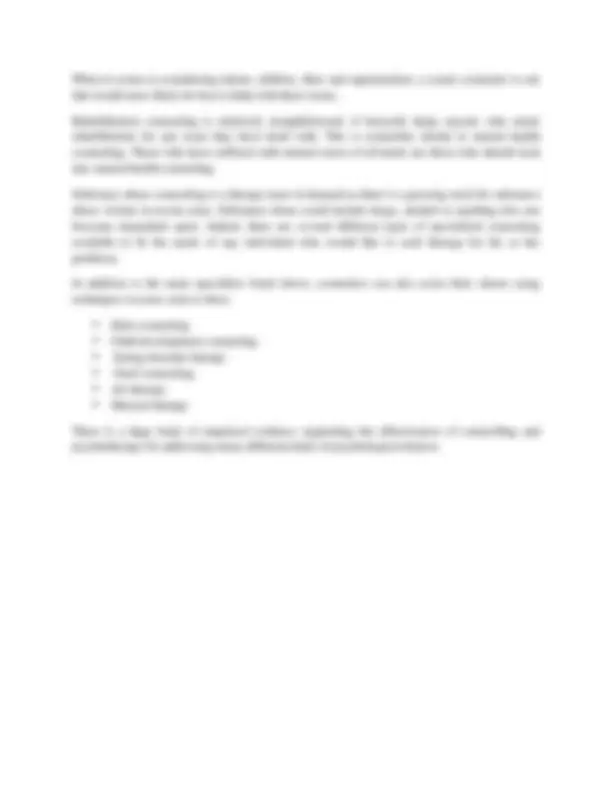



Study with the several resources on Docsity

Earn points by helping other students or get them with a premium plan


Prepare for your exams
Study with the several resources on Docsity

Earn points to download
Earn points by helping other students or get them with a premium plan
Community
Ask the community for help and clear up your study doubts
Discover the best universities in your country according to Docsity users
Free resources
Download our free guides on studying techniques, anxiety management strategies, and thesis advice from Docsity tutors
It is related to the interviewingatheod
Typology: Summaries
1 / 3

This page cannot be seen from the preview
Don't miss anything!


The method a counselor chooses may be either direct approach (counselorcentered) or indirect approach (counselee-centered)—although a combination of both is often appropriate. i) Direct Approach: When the counselor assumes the initiative and carries a major part of the responsibility for problem identification and resolution he or she is using the direct approach. This approach is called as “I talk, you listen”. This direct approach to counseling might also be called the problem solving approach. It has both advantages and disadvantages that are given below. Advantages of Direct Approach: Quickest method. Good for people who need clear, concise direction. Allows counselors to actively use their experience. Disadvantages of Direct Approach: Doesn’t encourage clients to be part of the solution. Tends to treat symptoms, not problems. Tends to discourage clients from talking freely. Solution is the counsellor’s, not the client’s. ii) Indirect Approach: The indirect approach was developed primarily by the renowned psychologist Dr. Carl B. Rogers. In this method, the counsellor’s participation is minimal, and the techniques of reflection and acceptance are used to encourage the counselee to freely express himself. The counselor pays particular attention to the emotion and attitudes associated with the problem. The counselee is encouraged to choose the goals, make the decisions, and take responsibility for those decisions. Advantages of Indirect Approach: Encourages maturity. Encourages open communication. Develops personal responsibility. Disadvantages of Direct Approach: More time-consuming Requires greatest counsellor skill.
Combined counseling: Depending on the nature of the client, intensity of the problem and the available resources, Combination of directive and nondirective approaches are used. Advantages of this approach: